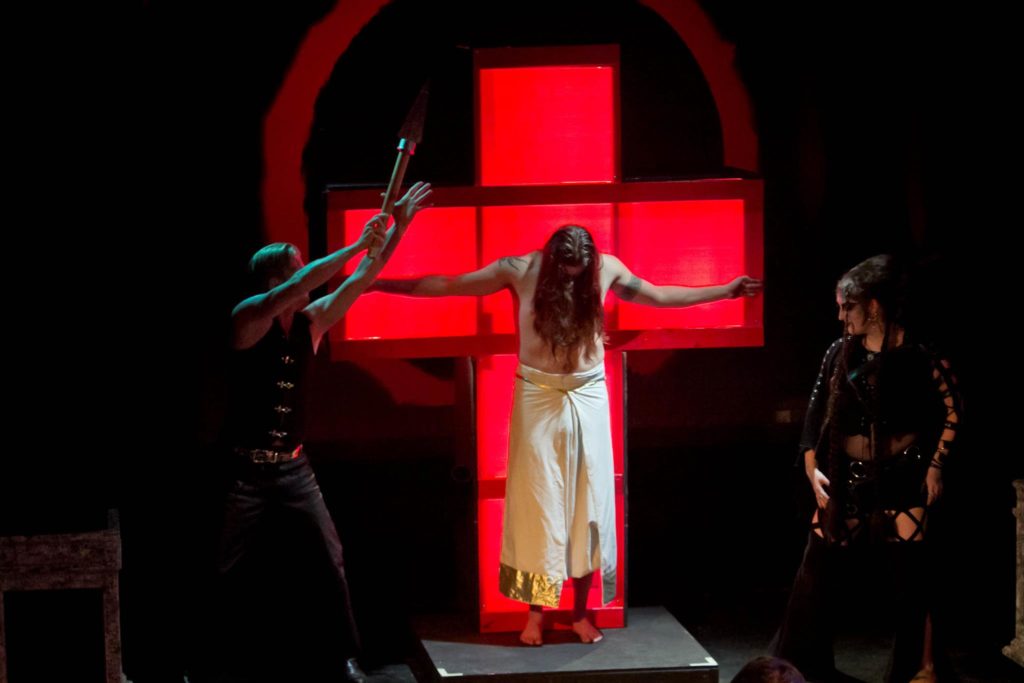The Mundane Order of Miracles
One of the little aphorisms I have said to myself over the years, just to keep myself going, is that “Faith can certainly move mountains, in so far as we employ our faith to move that mountain one rock at a time.” All art is magick. All creation falls into the mundane order of miracles we shape with our will, and build with our sinews. Inspiration and perspiration are closely interwoven.
With that in mind, picking up where we left off in our previous post, we will proceed to step three of our Doing Rites Right flow chart.
3. Have your planning meetings
This step is much as we covered in the first post in this series, but you will likely need to plan several meetings, covering specific areas. Don’t neglect any of the A,B,Cs we covered before: Artisit Vision, Budget, Casting, Dates, Effects and Fallout!
Come prepared with copies of the annotated script that you can share with your cast and crew; copies that they can scribble on and generally use to keep track of evolving landscape of your vision. Your meeting topic may include:
Stagecraft and Lighting – depending on whether you are using a theater, you may need a professional for this.
Props – Don’t forget to give yourself time to make these before rehearsal, so your cast can work with them.
Costumes – Depending on the theme, thrift stores can be a fantastic resource.
Casting – As your production size increases, your cast size may too. You may need to plan for auditions, so be sure to give yourself some advance time to advertise.

Sets – These can be simple or complex. Anything you can do with theater cubes will make your life easier, but if you are like me, you will what to do something big. Give yourself a lot of time to figure out how to construct your vision. Start with a cardboard model. I built them out of pizza boxes with duct tape.
Rehearsal Schedule – Plan the number of rehearsals based on the chart about, then add 2 for tech and dress rehearsal. It is best if you plan scene by scene, and give cast members the night off it they are not in the scenes being rehearsed that night.
For our productions, music and choral rehearsals – This is a whole other aspect, and should be planned prior to the blocking rehearsals, so that the choir knows it’s parts before they start acting. For each of these you will need to plan who will be responsible for the task, what sort of time frame will be required, and what sort of budget you will need.
4. Readers-Theater/Rehearsal
With a more complex vision, you will require a more granular rehearsal. Each scene and poem will need to be broken down and run repeatedly.
You can still start with a readers-theater in an early rehearsal in order to familiarize the cast with the structure, and brainstorm ideas for interactions between the characters.
Given the spartan nature of the script notes, there will be a great many questions about what motivates these characters, and how you choose to answer these questions will shape your presentation. This process will go on throughout the rehearsal schedule.
As your performance date approaches, you may find yourself invoking a rule coined by Melissa during our runs: “Simplify, do not embellish.” Your vision may be rich and complex, and creating it is certainly part of the learning process, but it will not always translate to stage. At some point, you will have to let go of the vision a little bit in order to be ready for opening night. Don’t let this discourage you! It is part of the process.

5. Presentation
Again, depending on scale, you may do a single performance, or many. By the time opening night rolls around, the work of the director should be done. Again, I strongly advise that once the show opens, there in no more tweaking. The cast will have an idea how the show should run, and changes at this point will simply cause confusion and undermine the performance.
Allow the magick to run it’s course.
6. Review and relax. At this stage in the game, we may be talking about theatrical reviews. Here I would urge you, don’t be too worried about it. As it turns out, criticism falls into two categories. Useful, and stupid. Seriously.
A useful critique from an eloquent and professional source will undoubtedly discuss areas where your presentation either succeeded of failed in the eyes of the critic. It will contain information on the impressions that the critic received during the staging, and some indication about whether they would recommend their readers attend. Even a negative review might be very helpful in shaping your future work.
A stupid review is usually provided by someone who is unpaid on the internet. It will contain expletives, insults, and no useful information. Disregard these. Don’t even read the whole thing. If it is a comment you have control over, delete it and move on.
And don’t forget to relax and enjoy your achievement! Laugh about the hard parts! Consider all you have learned! And above all:

